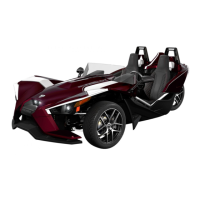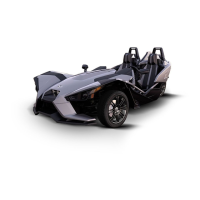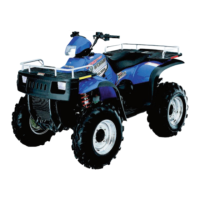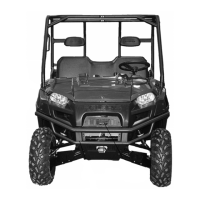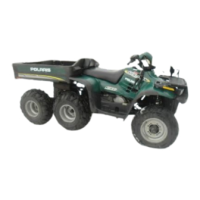Why is the temperature too low on my Polaris SPORTSMAN 600 Motorcycle?
- EEduardo HumphreySep 15, 2025
If the temperature of your Polaris Motorcycle is too low, it could be due to: * Thermostat stuck open.
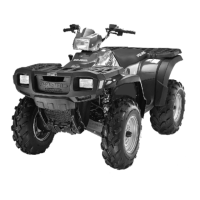
Why is the temperature too low on my Polaris SPORTSMAN 600 Motorcycle?
If the temperature of your Polaris Motorcycle is too low, it could be due to: * Thermostat stuck open.
| Brand | Polaris |
|---|---|
| Model | SPORTSMAN 600 |
| Category | Motorcycle |
| Language | English |
Introduction to the manual, outlining its purpose and intended audience.
Explains safety symbols like DANGER, WARNING, CAUTION, and NOTE used in the manual.
Lists trademarks acknowledged by Polaris for products mentioned in the manual.
Identifies models, dimensions, and detailed specifications for early/late 600/700 Sportsman.
Lists publication numbers, paint codes, torque specs, conversion tables, and glossary of terms.
Explains how to differentiate between early and late 2004 Sportsman models based on visual cues.
Outlines recommended inspection, adjustment, and lubrication intervals for components based on hours and calendar time.
Lists essential daily inspection items, including tires, fluids, brakes, throttle, lights, and engine coolant.
Details lubrication for engine oil, transmission, gearcases, and brake fluid, including types, methods, and frequencies.
Lists special tools for maintenance and provides troubleshooting guidance for common issues.
Provides exploded views and key service data for engine components, including torque specifications.
Covers engine removal, installation procedures, and essential break-in period recommendations.
Details procedures for cylinder honing, valve service, piston/ring inspection, and crankshaft/camshaft service.
Provides guidance for diagnosing and resolving common engine problems, including spark, idle, power, and cooling issues.
Covers carburetor exploded views, disassembly, cleaning, inspection, assembly, and float adjustment.
Explains fuel tank assembly, fuel flow, fuel filter maintenance, and fuel pump testing.
Provides guidelines for carburetor jetting based on conditions and explains the operation of Mikuni CV carbs.
Lists symptoms and causes for fuel starvation, rich mixture, poor idle, and erratic idle, offering troubleshooting steps.
Details procedures for removing body panels, racks, bumpers, and grills.
Covers steering post assembly, A-arm replacement, and suspension component inspection and adjustment.
Provides torque specifications and procedures for wheel and hub removal, installation, and inspection.
Covers PVT system overview, maintenance, inspection, drying, overheating diagnosis, and troubleshooting.
Details drive clutch disassembly, inspection, reassembly, and related component service.
Outlines disassembly, inspection, and assembly procedures for EBS driven clutches, including bushing service.
Details inspection of the drive belt for wear, and procedures for its removal and installation.
Covers front axle removal/installation, CV joint boot replacement, hub service, and gearcase operation/disassembly.
Details procedures for rear hub removal/installation, drive shaft removal/service, and handling tips.
Outlines rear gearcase removal, installation, disassembly, and reassembly procedures, including exploded views.
Provides exploded views and torque specifications for early and late 2004 transmissions.
Details the procedures for removing and installing the transmission, including disconnecting related components and supports.
Covers the complete process of disassembling and reassembling the transmission, including gear and shaft procedures.
Explains the hydraulic brake system overview, service notes, and troubleshooting for brake noise.
Details front brake pad removal/installation, disc inspection/replacement, and caliper removal/disassembly/inspection.
Covers rear brake pad removal/installation and rear caliper removal/inspection/assembly.
Explains hydraulic caliper bleeding, fluid change, master cylinder removal/installation, and auxiliary brake adjustment.
Covers flywheel identification, ignition system operation, testing flow charts, and troubleshooting CDI and ignition components.
Explains instrument cluster overview, gear position switch test, and speedometer troubleshooting.
Details charging system testing, battery identification, maintenance, testing, and charging procedures for both battery types.
Provides wiring diagrams for various systems and identifies components, including hand warmers, winch, and ignition systems.

